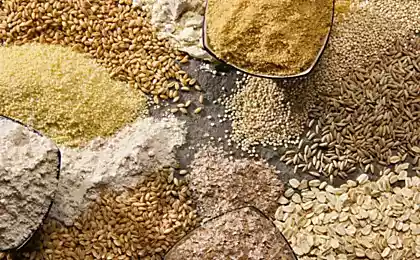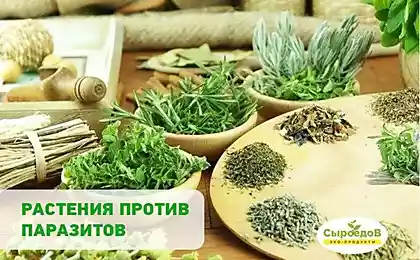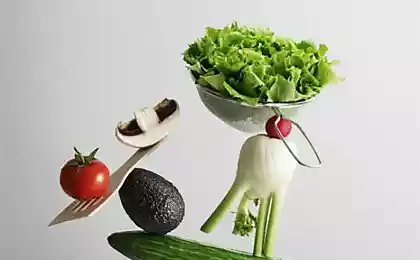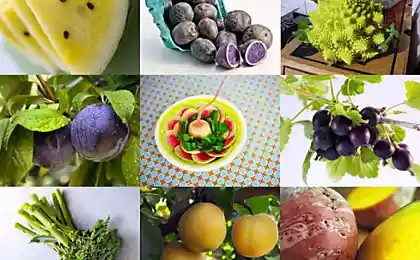494
How light and darkness affect the products
Before cooking in fresh vegetables and fruits continues to undergo biochemical processes. Their understanding can help us to increase the nutritional value of "live" products. Let's see how it can be done.
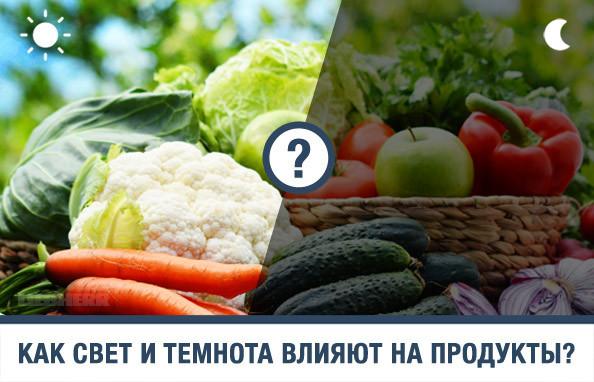
From fruits and vegetables, like humans, have a circadian rhythm associated with the change of day and night. In the human body it corresponds to the 24 hour cycle of day and night and controls the processes of sleep and wakefulness, and also influences the metabolism, regulating body temperature and even aging. Fresh fruits and vegetables are also sensitive to the change of day and night. The amount of light and darkness they receive, may affect the nutrient content.
Note: the circadian rhythm in humans is involved in the regulation of metabolism and mental activity. The term is known since ancient times, when the researchers studied different processes in plants. Its name is derived from two Latin words: "circa" — around and "dies". Recently often mentioned in connection with animals and people. The term "circadian rhythm" in everyday life is known as the "internal clock".
In the study of Rezhevichi cruciferous (typical representatives: cabbage, broccoli, cauliflower), the biochemistry from rice University have found that there are plants that can change the production of some chemicals, even if they were cut off from the stalk.
In a recent study, Professor of biochemistry Janet Braham reports that Razumovich (Arabidopsis) reacts to light cycles, releasing protective hormones called "glucosinolates", playing the role of a natural pesticide, protecting plants against herbivores. It is these substances that give useful vegetables (turnips, horseradish, Kale, kohlrabi, etc.) specific bitter taste.
To find out if other plants have similar response to light, scientists have studied sprouts purchased at the supermarket. Half of the cabbages were tested under normal conditions, the change of day and night, and the rest were exposed to different frequencies of exposure to light and darkness. As in the case study Rezhevichi it was discovered that cabbage has a similar reaction to the light and because of this produces more protective hormones.
In the experiment scientists have placed the cabbages in the room with caterpillars-pierids. The vegetables were kept under a daily cycle of the change of light and darkness received the least damage and subsequently spoiled not so fast.
Glucosinolates not only protect the cabbage from the hungry caterpillars, according to scientists, these compounds help prevent cancers and activate enzymes that neutralize carcinogens. In other words, they help the body to fight with harmful cancer.
Scientists conducted the study over other fruits and vegetables including: spinach, lettuce, zucchini, carrots and blueberries. All of them were exposed to different light cycles, and then again put at the mercy of the tracks. The products were stored under normal lighting conditions (12 hours light and 12 dark) were also less susceptible to damage from caterpillars and continued to produce protective compounds.
Circadian rhythms, of course, affect the content of vitamins and antioxidants in plants. This means that light has a direct impact on their nutritional value.published
P. S. And remember, only by changing their consumption — together we change the world! ©
Source: blog.liebherr.com/holodilniki/ru/kak-svet-i-temnota-vlijajut-na-produkty/

From fruits and vegetables, like humans, have a circadian rhythm associated with the change of day and night. In the human body it corresponds to the 24 hour cycle of day and night and controls the processes of sleep and wakefulness, and also influences the metabolism, regulating body temperature and even aging. Fresh fruits and vegetables are also sensitive to the change of day and night. The amount of light and darkness they receive, may affect the nutrient content.
Note: the circadian rhythm in humans is involved in the regulation of metabolism and mental activity. The term is known since ancient times, when the researchers studied different processes in plants. Its name is derived from two Latin words: "circa" — around and "dies". Recently often mentioned in connection with animals and people. The term "circadian rhythm" in everyday life is known as the "internal clock".
In the study of Rezhevichi cruciferous (typical representatives: cabbage, broccoli, cauliflower), the biochemistry from rice University have found that there are plants that can change the production of some chemicals, even if they were cut off from the stalk.
In a recent study, Professor of biochemistry Janet Braham reports that Razumovich (Arabidopsis) reacts to light cycles, releasing protective hormones called "glucosinolates", playing the role of a natural pesticide, protecting plants against herbivores. It is these substances that give useful vegetables (turnips, horseradish, Kale, kohlrabi, etc.) specific bitter taste.
To find out if other plants have similar response to light, scientists have studied sprouts purchased at the supermarket. Half of the cabbages were tested under normal conditions, the change of day and night, and the rest were exposed to different frequencies of exposure to light and darkness. As in the case study Rezhevichi it was discovered that cabbage has a similar reaction to the light and because of this produces more protective hormones.
In the experiment scientists have placed the cabbages in the room with caterpillars-pierids. The vegetables were kept under a daily cycle of the change of light and darkness received the least damage and subsequently spoiled not so fast.
Glucosinolates not only protect the cabbage from the hungry caterpillars, according to scientists, these compounds help prevent cancers and activate enzymes that neutralize carcinogens. In other words, they help the body to fight with harmful cancer.
Scientists conducted the study over other fruits and vegetables including: spinach, lettuce, zucchini, carrots and blueberries. All of them were exposed to different light cycles, and then again put at the mercy of the tracks. The products were stored under normal lighting conditions (12 hours light and 12 dark) were also less susceptible to damage from caterpillars and continued to produce protective compounds.
Circadian rhythms, of course, affect the content of vitamins and antioxidants in plants. This means that light has a direct impact on their nutritional value.published
P. S. And remember, only by changing their consumption — together we change the world! ©
Source: blog.liebherr.com/holodilniki/ru/kak-svet-i-temnota-vlijajut-na-produkty/
